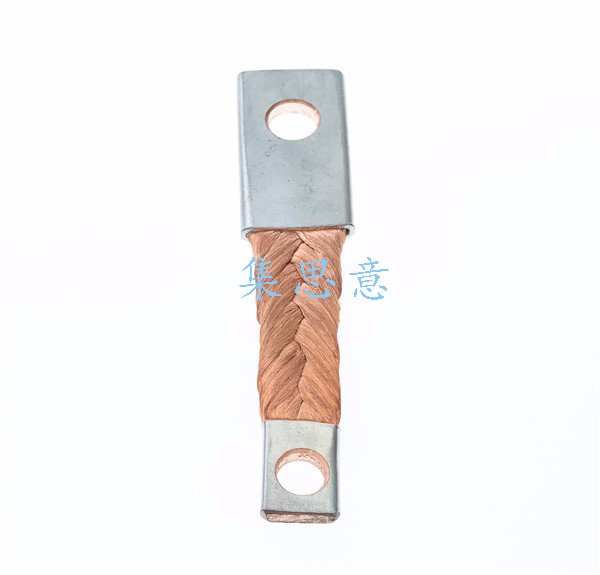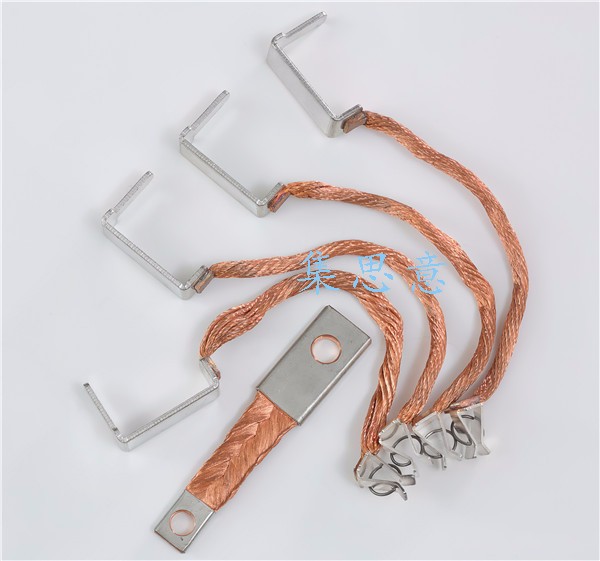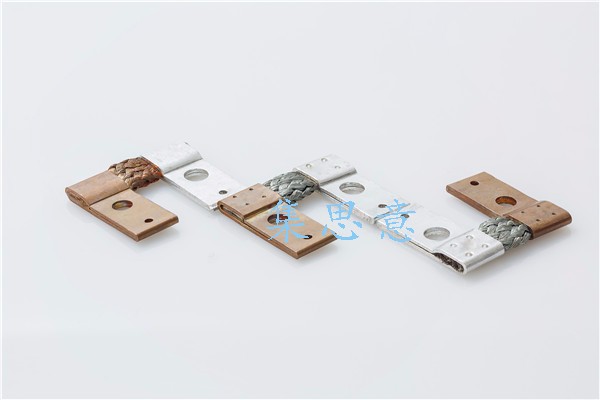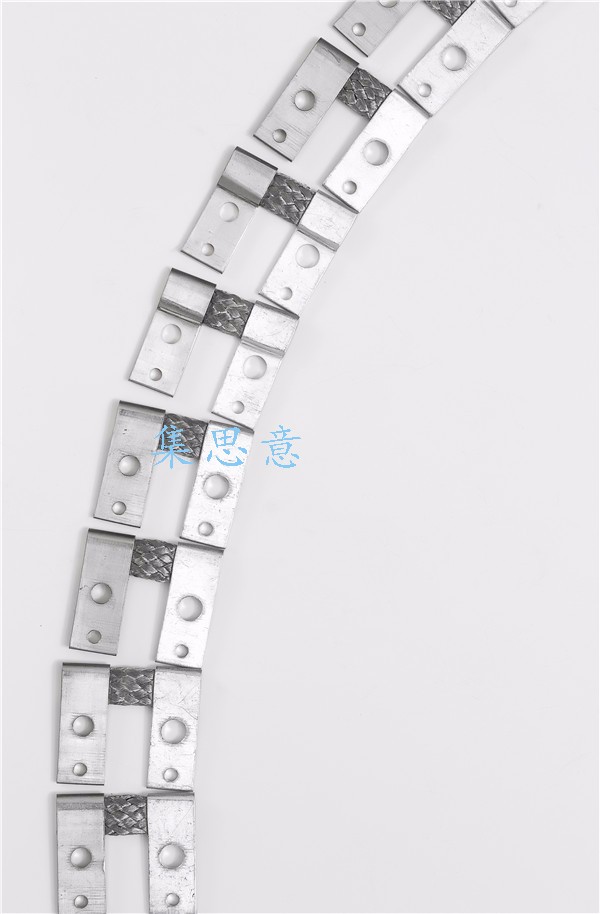In the complex network of electrical connections, self-fusing welding connector wires are gradually emerging as a prominent solution. With their unique performance and innovative connection methods, they have brought new solutions to numerous fields. From precision electronic devices to large-scale power transmission systems, self-fusing welding connector wires are widely used, and their importance is self-evident.
I. Principles of Self-Fusing Welding Connector Wires
The ability of self-fusing welding connector wires to achieve the unique "self-fusing welding" function lies in their material properties and structural design. Some self-fusing welding wires use special alloy materials as conductors. These alloys have relatively low melting points and can melt quickly under specific temperature conditions to achieve connection between wires. For example, some self-fusing welding wires used in small electronic devices are made of alloys containing low-melting-point metals such as tin and lead. When an appropriate external heat source is applied, the connection part of the alloy conductor melts rapidly, and a firm connection is formed after cooling.
Another common self-fusing welding principle is based on the design of the wire's insulation layer. For instance, the insulation layer of certain self-fusing welding wires is made of special materials with hot-melt properties. When exposed to a certain temperature, the insulation layer not only melts but also releases substances with soldering-aid effects. Taking the common self-welding enameled wire as an example, the insulating paint on its surface melts and decomposes at high temperatures. The released flux can clean the oxide layer on the wire connection part, and at the same time, the molten state of the insulating paint helps the wires bond closely. After cooling, the insulation layer solidifies again, completing both the electrical connection and the restoration of insulation performance.
II. Advantages of Self-Fusing Welding Connector Wires
(1) Efficient and Convenient Connection Process
Compared with traditional welding methods, self-fusing welding connector wires greatly simplify the connection process. Traditional welding often requires professional welding equipment, skilled operators, and additional solder. In contrast, self-fusing welding wires only need an appropriate heat source to complete the connection. In the production line of electronic products, the use of self-fusing welding wires can significantly improve production efficiency. Taking the manufacturing of mobile phone motherboards as an example, when self-fusing welding connector wires are used to connect electronic components, the operation time for each connection point can be reduced from several seconds (with traditional welding) to less than one second, greatly increasing the overall production speed.
(2) Excellent Electrical Performance
The connection points formed by self-fusing welding exhibit outstanding electrical performance. Since the connection is achieved through the melting and fusion of the material itself, the resistance at the connection part is relatively low, which can effectively reduce energy loss during current transmission. In the field of power transmission, the power transmission efficiency of lines using self-fusing welding connector wires can be improved by approximately [X]% compared with lines using ordinary connection methods. Moreover, this low-resistance characteristic is particularly important in high-frequency circuits, as it can reduce signal transmission attenuation and ensure stable and accurate signal transmission.
(3) Reliable Mechanical Strength
The connection points of self-fusing welding have high mechanical strength and can withstand a certain degree of external forces such as tension and vibration. In the complex electrical environment of an automobile engine compartment, various wire harnesses need to withstand the test of engine vibration and temperature changes. For automobile wire harnesses using self-fusing welding connector wires, the probability of loosening or breaking at the connection points during long-term vibration tests is much lower than that of wire harnesses using traditional connection methods, ensuring the stable operation of the automobile electrical system.
(4) Environmental Advantages
In the process of using self-fusing welding connector wires, the demand for additional solder is reduced, thereby lowering the emission of pollutants such as waste gas and residue generated during welding. In some electronic device manufacturing industries with high environmental requirements, such as medical electronic equipment and aerospace electronic equipment, the environmental characteristics of self-fusing welding connector wires make them the preferred choice. Compared with traditional welding methods, the use of self-fusing welding wires can reduce the generation of welding waste by approximately [X]%.
III. Application Scenarios of Self-Fusing Welding Connector Wires
(1) Electronic Device Manufacturing Field
In the production of small electronic devices such as smartphones, tablets, and smart watches, self-fusing welding connector wires are widely used to connect motherboards with various electronic components. These devices have compact internal spaces and require high precision, reliability, and production efficiency for electrical connections. Self-fusing welding connector wires can meet these requirements and achieve efficient and reliable connections in small sizes. For example, in the manufacturing of smart watches, self-fusing welding connector wires are used to connect internal components such as micro-batteries, sensors, and displays to the motherboard. This not only ensures the lightweight and thin design of the device but also improves the stability and yield of the product.
(2) Automotive Industry
The electrical systems of automobiles are becoming increasingly complex, posing severe challenges to the reliability and durability of electrical connections. Self-fusing welding connector wires are widely used in automobile wire harnesses, engine control systems, and on-board electronic equipment. In automobile wire harnesses, the use of self-fusing welding connector wires can reduce the weight and volume of the wire harness, while improving the reliability of connections and reducing the incidence of automobile failures caused by connection problems. In the battery management system of new energy vehicles, self-fusing welding connector wires are used to connect battery modules and control units. Their excellent electrical performance and mechanical strength can ensure the stable operation of the battery system under various working conditions.
(3) Power Transmission and Distribution Field
Self-fusing welding connector wires also play an important role in medium and low-voltage power transmission lines and equipment such as power distribution boxes. In some outdoor power facilities, traditional welding methods are greatly affected by environmental factors. However, self-fusing welding connector wires can achieve fast and reliable connections in relatively harsh environments. For example, in power emergency repairs in remote areas, maintenance personnel can quickly repair damaged power lines using self-fusing welding connector wires, reducing power outage time. Furthermore, the low-resistance characteristic of self-fusing welding connection points helps reduce line losses during power transmission and improve the economy of power transmission.
(4) Aerospace Field
Aerospace equipment has extremely strict requirements for the reliability and lightweight design of electronic devices. Self-fusing welding connector wires, with their reliable connection performance and light weight, are used in the electrical systems of aircraft, satellites, and other aerospace equipment. In the avionics system of an aircraft, self-fusing welding connector wires are used to connect various sensors, communication equipment, and control systems, ensuring stable transmission of electrical signals in the complex electromagnetic environment and severe vibration conditions at high altitudes. In the electronic equipment of satellites, the use of self-fusing welding connector wires not only reduces the weight of the satellite and lowers launch costs but also improves the reliability of the satellite's operation in the space environment.
IV. Manufacturing Process and Quality Control of Self-Fusing Welding Connector Wires
The manufacturing process of self-fusing welding connector wires directly affects their performance and quality. In the selection of conductor materials, the alloy composition needs to be accurately proportioned according to the electrical performance requirements of specific application scenarios. For applications requiring high conductivity, alloys based on copper with an appropriate amount of low-melting-point metals are selected; for special occasions requiring high-temperature resistance, special high-temperature alloys are used. In the production of the insulation layer, advanced coating technology is adopted to ensure uniform thickness of the insulation layer and stable hot-melt and soldering-aid properties.
Quality control runs through the entire production process of self-fusing welding connector wires. In the raw material inspection stage, strict testing is conducted on the purity of conductor materials, the proportion of alloy components, and the performance of insulation materials. During the production process, online monitoring equipment is used to real-time monitor key parameters such as wire diameter, insulation layer thickness, and self-fusing properties. In the finished product inspection stage, a variety of methods including tensile testing, resistance testing, insulation performance testing, and reliability testing simulating actual application environments are used to conduct comprehensive testing on each batch of self-fusing welding connector wires. Only products that meet all testing standards can enter the market.
V. Challenges and Development Trends of Self-Fusing Welding Connector Wires
Although self-fusing welding connector wires have many advantages, they still face some challenges in practical applications. Firstly, the cost of self-fusing welding wires is relatively high, especially for products made of special materials and advanced processes. This limits their large-scale application to a certain extent. Secondly, further in-depth research is needed on the optimal parameter matching of self-fusing welding wires in different application scenarios to give full play to their performance advantages. For example, how to optimize the material and structure of self-fusing welding wires to ensure stable performance in extreme environments such as high temperature and high humidity remains an urgent problem to be solved.
However, with the continuous advancement of materials science and manufacturing technology, self-fusing welding connector wires show broad development prospects. In the future, their development trends will be mainly reflected in the following aspects. Firstly, in material innovation, the development of self-fusing welding materials with lower cost and better performance, such as new nanocomposite materials, is expected to further improve the electrical performance and mechanical strength of wires while reducing costs. Secondly, in the intelligentization of manufacturing processes, the introduction of advanced technologies such as artificial intelligence and big data will realize precise control of the production process and quality traceability, improving production efficiency and the stability of product quality. Thirdly, in the expansion of application fields, with the rapid development of emerging industries such as new energy, 5G communication, and the Internet of Things, self-fusing welding connector wires will find application spaces in more new fields, such as the electrical connection of new energy charging piles and the connection between antennas and equipment in 5G base stations.
As an innovative product in the field of electrical connections, self-fusing welding connector wires are gradually changing the way of electrical connections with their unique principles, significant advantages, and broad application prospects. With the continuous development and improvement of technology, they will definitely play a more important role in the electrical field in the future and provide strong support for the development of various industries.






